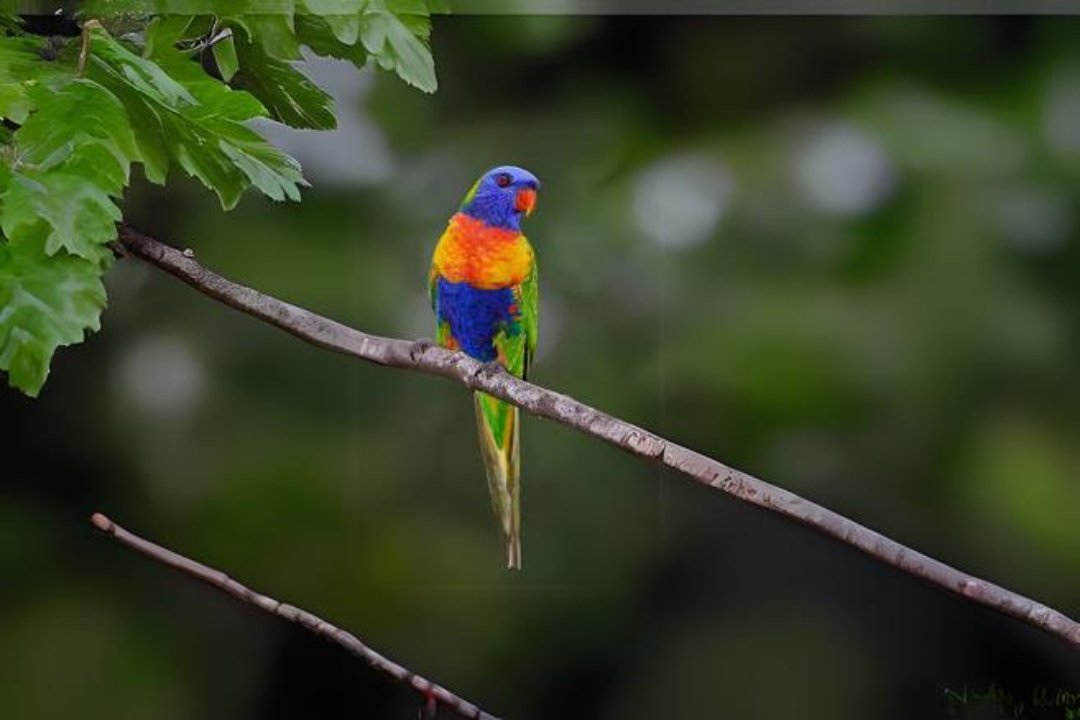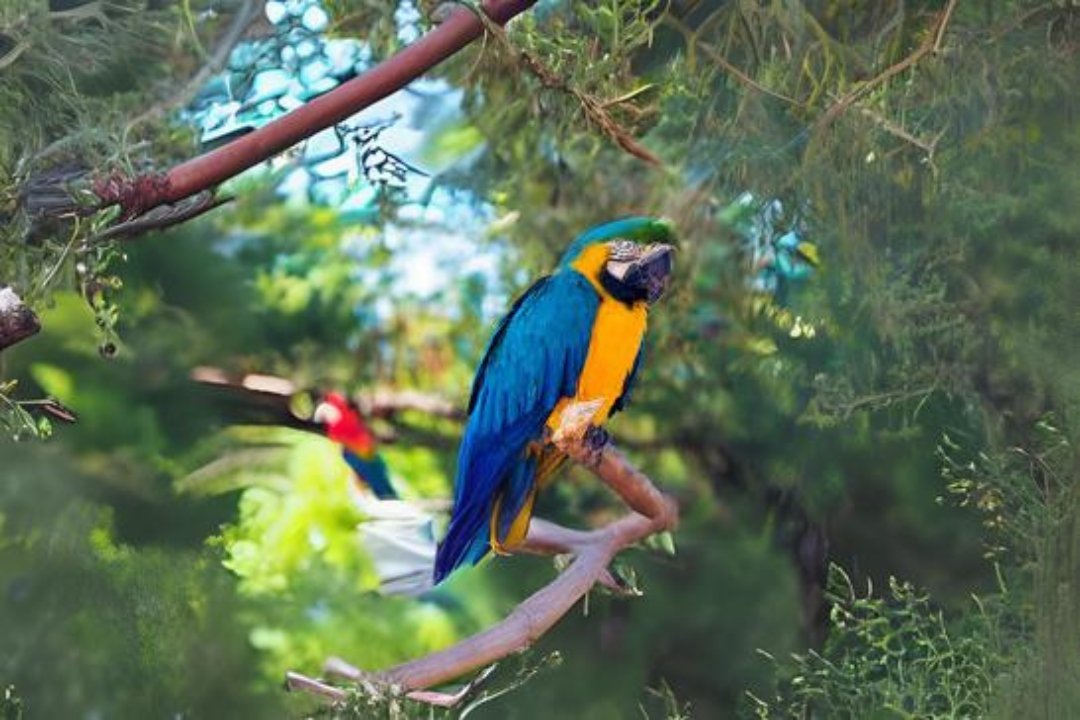Introduction to the Fig parrot
Fig Parrots, having a place with the family Cyclopsitta and Psittaculirostris, are a gathering of little to medium-sized parrots known for their lively plumage and specific eating regimen. Found overwhelmingly in the rainforests of Australasia, these birds have spellbound bird fans and specialists the same with their exceptional variations and natural job. This complete article digs into the scientific classification, actual qualities, environment, diet, conduct, reproducing propensities, preservation status, and the significance of Fig Parrots in their biological systems.
Taxonomy and Classification
They are ordered under the family Psittacidae and subfamily Psittaculinae. They have a place with two genera:
Cyclopsitta Incorporates species, for example, the Twofold peered toward Fig Parrot (Cyclopsitta diophthalma).
Psittaculirostris Incorporates species, for example, the Plum-confronted Lorikeet (Psittaculirostris eyrie).
They are portrayed by their little to medium size, going from around 15 to 25 centimeters long. They show distinctive plumage tones, frequently including shades of green, red, blue, and yellow. A few animal categories, similar to the Twofold looked at Fig Parrot, have particular eye fixes that differ in variety among subspecies.
They are fundamentally tracked down in the rainforests and adjoining territories of Australasia, including portions of Australia, New Guinea, and close by islands. They occupy thick timberland coverings where they feed on fig natural products, which are bountiful in these locales. Their appropriation is frequently connected to the accessibility of their essential food source, figs.
The eating routine of Fig Parrots is specific, essentially comprising of fig natural products (Ficus spp.). They are profoundly subject to fig trees for both food and settling locales. Fig Parrots assume a urgent part in seed dispersal inside their environments, adding to the variety and recovery of timberland biological systems
Behavior and Social Structure
They are regularly friendly birds, frequently saw two by two or little rushes. They display light-footed flight and are proficient at exploring thick timberland conditions. Vocalizations among Fig Parrots fluctuate, going from delicate babbling to additional articulated calls utilized for correspondence and mate fascination.
Rearing seasons for Fig Parrots frequently concur with the accessibility of fig organic products. They home in tree hollows, where females lay a little grip of eggs. The two guardians share the obligation of hatching the eggs and taking care of the chicks. The fledging time frame shifts among species however for the most part endures half a month prior to the youthful birds become free.
Numerous types of Fig Parrots face protection challenges because of territory misfortune and fracture brought about by deforestation and human turn of events. A few animal varieties are recorded as undermined or jeopardized on the IUCN Red Rundown, featuring the requirement for designated preservation endeavors to safeguard their leftover natural surroundings and populaces.
Fig Parrots assume an imperative part in their biological systems as seed dispersers for fig trees. By consuming fig products of the soil the seeds, they add to the recovery of woods and the upkeep of plant variety. Their presence is demonstrative of solid woodland biological systems and highlights their significance in keeping up with natural equilibrium.

Interaction with Humans
They have generally been respected for their beautiful plumage and extraordinary ways of behaving. They are periodically kept in aviculture, in spite of the fact that protection endeavors stress the significance of safeguarding wild populaces. Understanding their regular ways of behaving and natural necessities is pivotal for effective hostage rearing projects.
The essential dangers to Fig Parrots incorporate environment annihilation, unlawful catching for the pet exchange, and environmental change. Protection drives center around living space preservation, investigation into reproducing science, and local area instruction to moderate these dangers and advance conjunction among people and Fig Parrots.
Logical exploration on Fig Parrots keeps on extending how we might interpret their science, conduct, and protection needs. Preservation endeavors incorporate natural surroundings reclamation, foundation of safeguarded regions, and public mindfulness crusades pointed toward lessening unlawful catching and advancing maintainable woods the board.
Conclusion
They are enthralling avian species that encapsulate the magnificence and intricacy of tropical rainforest environments. Their energetic plumage, specific eating routine, and biological job as seed dispersers make them priceless parts of Australasian biodiversity. As we endeavor to ration their living spaces and populaces, understanding the science and protection status of Fig Parrots is fundamental for guaranteeing their endurance and the conservation of their normal territories for people in the future. Through designated protection endeavors and public commitment, we can defend these perplexing birds and their essential job in keeping up with woods wellbeing and biodiversity.
Taxonomy and Evolutionary History
Hereditary Examinations Investigating the hereditary variety and transformative connections among Fig Parrot species can give bits of knowledge into their developmental history and versatile characteristics.
Biogeographical Examples Examining the biogeographical examples of Fig Parrot dissemination across Australasia can uncover factors impacting their ongoing variety and circulation.
Taking care of Transformations Analyzing the physical elements and taking care of variations of Fig Parrots, like their mouth morphology and stomach related physiology, specific for fig utilization.
Shading and Sexual Dimorphism Researching the job of plumage hue in mate choice and species acknowledgment among Fig Parrots, remembering varieties for variety designs across various subspecies.
Scavenging Conduct Concentrating on the searching techniques and dietary inclinations of Fig Parrots, with an emphasis on fig tree usage and occasional varieties in taking care of propensities.
Social Construction Investigating the social association and elements inside Fig Parrot runs, including mate devotion, helpful rearing ways of behaving, and correspondence through vocalizations.
Breeding Biology
Settling Nature Depicting the settling propensities and determination of tree depressions by Fig Parrots for settling locales, including factors impacting home site accessibility and reasonableness.
Parental Consideration Exploring parental consideration ways of behaving among Fig Parrots, including brooding periods, taking care of systems for little birds, and post-fledging care until freedom.
Environment Fracture Evaluating the effects of natural surroundings discontinuity on Fig Parrot populaces, including hereditary segregation, decreased scavenging open doors, and expanded weakness to predation.
Unlawful Natural life Exchange Tending to the danger of unlawful catching and exchange of Fig Parrots for the pet market, including implementation methodologies and local area based drives to lessen request.
Range Movements Anticipating potential territory movements and environment reasonableness for Fig Parrots under environmental change situations, including suggestions for species protection and versatile administration methodologies.
Social Pliancy Examining conduct transformations and phenotypic versatility in Fig Parrots in light of natural changes, remembering shifts for rummaging conduct and asset usage.

Community Engagement and Conservation Education
Nearby Partner Association Drawing in neighborhood networks in Fig Parrot protection endeavors through training, limit building, and practical occupation drives.
Ecotourism Valuable open doors Investigating ecotourism as a device for Fig Parrot protection, including mindful the travel industry rehearses, guest schooling programs, and financial advantages for nearby networks.
Safeguarded Region The board Assessing the adequacy of safeguarded regions and preservation holds in defending Fig Parrot environments, including strategy proposals for extending and further developing safeguarded region organizations.
Transboundary Preservation Advancing transboundary cooperation and arrangements among nations to address shared protection challenges for Fig Parrots across their reach.
Mechanical Developments Outfitting innovative advances, like remote detecting and satellite telemetry, to improve observing and preservation endeavors for Fig Parrot populaces.
Interdisciplinary Methodologies Incorporating interdisciplinary examination and cooperative associations to address complex preservation issues confronting it, including financial variables and administration systems.
Conclusion
The address an entrancing gathering of avian species unpredictably associated with the rich biodiversity of Australasian rainforests. Their dynamic tones, particular eating regimen, and environmental importance as seed dispersers highlight their significance in keeping up with timberland wellbeing and biological system strength. By focusing on territory preservation, tending to dangers like environment misfortune and unlawful exchange, and connecting with neighborhood networks in protection endeavors, we can get a future where Fig Parrots flourish in their normal natural surroundings. Through proceeded with exploration, training, and global collaboration, we can guarantee the safeguarding of Fig Parrots for a long time into the future, saving their job as ministers of biodiversity in tropical rainforests.
Populace Hereditary qualities Using sub-atomic methods to examine populace structure, quality stream, and hereditary variety among Fig Parrot species, giving experiences into their transformative variations and verifiable biogeography.
Phylogenetics Developing phylogenetic trees to explain the developmental connections and ordered grouping inside the family Cyclopsitta and Psittaculirostris, coordinating morphological, conduct, and hereditary information.
Adaptations and Morphological Diversity
Taking care of Biology Looking at the coevolutionary elements between it and fig trees (Focus spp.), remembering transformations for mouth morphology, stomach related physiology, and tangible insight for productive fig utilization.
Hue and Sexual Determination Exploring the transformative meaning of plumage tinge and examples in it, including sexual dimorphism, mate decision inclinations, and the job of variety motioning in friendly cooperation’s.
Correspondence Frameworks Breaking down vocalizations and visual signs in Fig Parrots for correspondence, including calls connected with mate fascination, domain safeguard, and coordination inside gatherings.
Rearing Techniques Concentrating on regenerative systems and parental consideration ways of behaving in Fig Parrots, including home site choice, brooding examples, taking care of systems, and post-fledging care of posterity.
Living space Discontinuity Surveying the effects of territory misfortune and fracture on Fig Parrot populaces, assessing scene network, hereditary separation, and environmental versatility in divided natural surroundings.
Human-Natural life Struggle Tending to clashes between it and human exercises, including agribusiness, urbanization, and asset extraction, proposing relief methodologies to lessen negative associations.
Climate Change Resilience
Versatile Limit Examining the versatile reactions of environment fluctuation and ecological change, remembering shifts for dispersion, phenology, and conduct pliancy in light of adjusted conditions.
Lawful Systems Assessing public and global preservation approaches and regulation influencing Fig Parrots, pushing for reinforced security measures, environment reclamation drives, and implementation instruments.
Nearby Strengthening Advancing people group based protection drives, upgrading neighborhood stewardship of Fig Parrot natural surroundings through instruction, limit building, and reasonable job open doors.
The travel industry and Preservation Financial aspects Surveying the likely advantages of ecotourism for Fig Parrot protection, assessing monetary impetuses, guest the board systems, and maintainable the travel industry practices to help nearby networks.
Remote Detecting Applying remote detecting advancements, including satellite symbolism and GIS planning, to screen Fig Parrot living spaces, survey environment quality, and focus on preservation intercessions across enormous spatial scales.
Citizen Science and Data Integration
Observing Organizations Connecting with resident researchers in the checking programs, using publicly supported information assortment, and coordinating data into protection arranging and the executives systems.
Interdisciplinary Exploration Cultivating coordinated efforts between environmentalists, geneticists, socio-business analysts, and strategy producers to address complex protection challenges confronting Fig Parrots, incorporating natural and financial viewpoints.
Worldwide Organizations Reinforcing global collaboration and associations to advance transboundary protection drives, sharing prescribed procedures, and assembling assets for Fig Parrot preservation across their reach.

Conclusion
The embody the excellence and environmental significance of Australasian rainforests, filling in as key seed dispersers and marks of timberland wellbeing. As we explore the difficulties of environment misfortune, environmental change, and human effects, figuring out their hereditary variety, conduct nature, and versatile techniques is central for powerful preservation.
By embracing inventive exploration, cultivating local area commitment, and pushing for strong protection strategies, we can defend Fig Parrots and their natural surroundings for people in the future. Together, through cooperative endeavors and feasible practices, we can guarantee a dynamic future where Fig Parrots flourish as one with their common habitats, improving our planet’s biodiversity and social legacy.
They having a place with the genera Cyclopsitta and Psittaculirostris, are charming avian species endemic to the lavish rainforests of Australasia. Prestigious for their dynamic plumage and particular eating regimen revolved around fig organic products (Focus spp.), these birds assume a crucial part as seed dispersers and environment engineers.
This far reaching article dives into the scientific classification, transformative history, physiological variations, taking care of biology, social way of behaving, conceptive methodologies, protection difficulties, and future possibilities for Fig Parrots notwithstanding ecological change.
Taxonomy and Evolutionary Insights
Ordered Variety Investigating the ordered variety inside Cyclopsitta and Psittaculirostris, including species disseminations, morphological varieties, and phylogenetic connections in view of hereditary examinations.
Verifiable Biogeography Exploring the authentic biogeography of Fig Parrots across Australasia, following their transformative starting points, dispersal examples, and variation to different environmental specialties.
Wholesome Nature Examining the dietary prerequisites and metabolic transformations of processing fig organic products, including the job of particular catalysts and stomach microbiota.
Scavenging Conduct Analyzing scrounging techniques, occasional varieties in diet, and spatial usage of fig assets by Fig Parrots, underscoring their environmental effect on fig tree elements and woodland recovery.
Morphological Specializations Depicting morphological variations in it, for example, bill morphology and tongue structure, advanced for productive fig utilization and control.
Social Association Exploring social designs inside the populaces, including herd elements, mate loyalty, helpful rearing ways of behaving, and correspondence through vocalizations and visual showcases.
Breeding Biology and Reproductive Strategies
Settling Biology Itemizing settling site determination, home development, and pit transformations for rearing Fig Parrots, with experiences into parental consideration, hatching periods, and chick advancement.
Regenerative Achievement Examining factors impacting conceptive achievement, including rearing irregularity, grasp size, and versatile reactions to ecological signs influencing settling achievement and posterity endurance.
Living space Misfortune and Fracture Evaluating the effects of deforestation, land change, and natural surroundings discontinuity on Fig Parrot populaces, featuring protection areas of interest and need regions for territory reclamation.
Environmental Change Flexibility Anticipating the ramifications of environment fluctuation and outrageous climate occasions on Fig Parrot territories, remembering shifts for dispersion, phenological befuddles, and versatile methodologies for strength.
Anthropogenic Dangers Tending to anthropogenic dangers like unlawful catching for the pet exchange, poaching, urbanization, and horticultural development, with suggestions for strategy intercessions and implementation measures.

Conservation Strategies and Management
Safeguarded Regions Assessing the viability of safeguarded regions and protection saves in shielding the territories, supporting for development, network upgrade, and economical administration rehearses.
Local area Based Protection Drawing in nearby networks in Fig Parrot preservation through training, limit building, and supportable vocation drives, cultivating stewardship and participatory preservation endeavors.
Worldwide Joint effort Advancing transboundary protection drives and worldwide associations to address shared difficulties, work with information trade, and assemble assets for compelling preservation activity.
Observing Advancements Using remote detecting, satellite telemetry, and GPS following to screen the developments, environment use, and populace patterns, supporting versatile administration and preservation arranging.
Hereditary Exploration Applying hereditary apparatuses and sub-atomic procedures to evaluate populace hereditary qualities, quality stream, and hereditary variety, illuminating protection rearing projects and hereditary administration techniques.
Resident Science Drives Drawing in resident researchers in information assortment, observing conventions, and biological overviews to upgrade spatial inclusion, information quality, and local area contribution in the protection.
Future Directions and Conservation Outlook
Versatile Administration Carrying out versatile administration structures to address dynamic preservation challenges, incorporating logical examination, partner commitment, and strategy development for economical results.
Environment Transformation Methodologies Creating environment brilliant preservation techniques for it, including territory reclamation, helped movement, and biological system based ways to deal with improve strength and versatile limit.
Instructive Effort Advancing public mindfulness, ecological schooling, and promotion missions to encourage appreciation for Fig Parrots, motivate protection activity, and construct support for biodiversity preservation.
Conclusion
The encapsulate the environmental uprightness and biodiversity extravagance of Australasian rainforests, filling in as cornerstone species fundamental for biological system wellbeing and flexibility. As we explore the intricacies of living space corruption, environmental change, and human effects, focusing on cooperative preservation endeavors and creative exploration drives is basic.
By shielding their territories, tending to preservation dangers, and enabling nearby networks, we can guarantee a future where Fig Parrots flourish as one with their indigenous habitats. Through supported obligation to protection science, strategy promotion, and public commitment, we can save the tradition of a long time into the future, getting their place as diplomats of biodiversity and images of environmental stewardship in the worldwide preservation scene.

